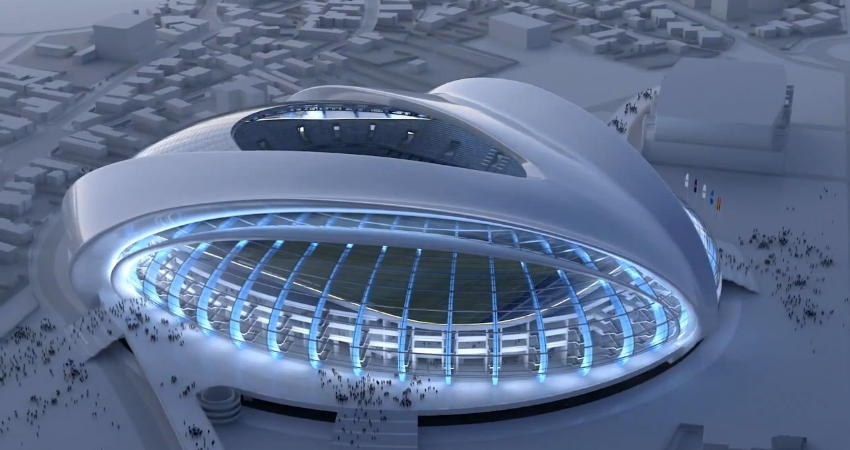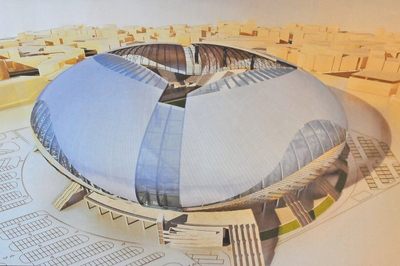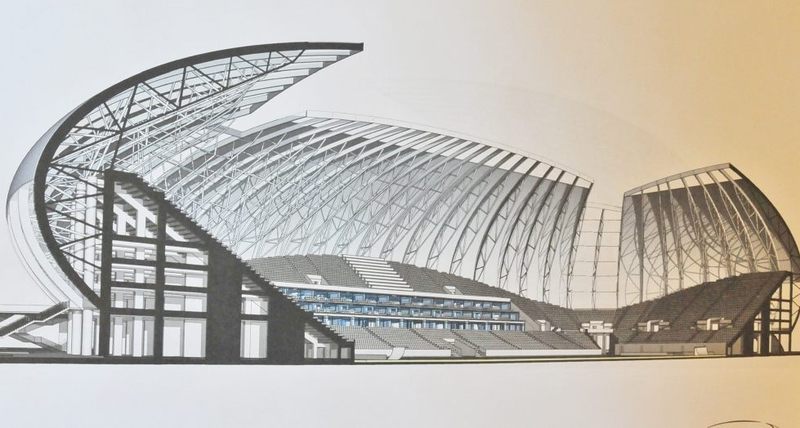New design: The egg-stadium from Romania
source: StadiumDB.com; author: michał
 A stadium for 30,000 people at a price almost impossible in most European countries ? Sounds interesting and looks even more so with a one-of-a-kind architecture.
A stadium for 30,000 people at a price almost impossible in most European countries ? Sounds interesting and looks even more so with a one-of-a-kind architecture.
Advertisement
In late spring of 2013 architecture websites around the world noticed this stadium design as one of the most interesting. And no wonder, because the bold concept for Craiova was truly one of a kind.

At the same time it was highly unrealistic. Not only for its futuristic shape, but also the budget of €100 million. Overall such a price for a 40,000 capacity stadium is far from high, but the strained city of Craiova could hardly afford it. Even more, there is no club in the city to fill it even in 50% on a regular basis, so doubts began arising.
The scheme was changed over the past several months, resulting in a new, more realistic scheme. The same architecture office produced a new concept along the same inspiration – the art of Constantin Brâncuși. It’s much more simple than the first, but this was required to cut cost.

 Still, shaped after creations of Brâncuși, the new stadium in Craiova will have unique proportions. The concept by Proiect Bucuresti may foresee only 30,000 seats, a decrease of 10,000 from the 2013 plan, but its height will put the ground among the tallest in this part of Europe.
Still, shaped after creations of Brâncuși, the new stadium in Craiova will have unique proportions. The concept by Proiect Bucuresti may foresee only 30,000 seats, a decrease of 10,000 from the 2013 plan, but its height will put the ground among the tallest in this part of Europe.
Reaching 60 meters will be possible thanks to the roof being very open and reaching upwards from the steep stands. This way the stadium will resemble the Brâncuși egg, one of this Romanian artist’s most recognised works. While protection from the elements may be questionable, the enclosed bowl should be very well insulated acoustically, while also offering optimum sightlines to all spectators, including 624 journalists and 222 disabled viewers.

The stadium will have 5 floors of space for various uses under the stands, also providing significant parking capacity. Parking sites directly around it will hold over 1,200 cars, while further 2,000 vehicles may be parked nearby.
Design and construction should altogether take no more than 17 months, a very short timeframe for any project of that scale. Its cost is also very low, nearly halved since the initial 2013 scheme. Of the €55 million only 5 million will be spent by local authorities, while the remainder will come from Romanian Ministry of Regional Development.
Advertisement

 StadiumDB
StadiumDB